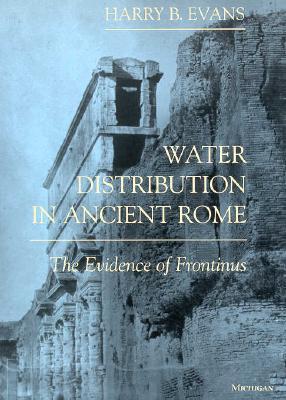Few patriotic odes are written to the water commissioners of great cities, but civilization rests in part upon a regular supply of water for drinking and agriculture. The rise of Rome can, in fact, be charted by the development of its system of water distribution. Down to the late fourth century B.C., Romans relied upon their springs and wells, as well as on the waters of the tawny Tiber, but by 312, the first aqueduct—the Appia—was constructed by Appius Claudius Caecus, the famous censor who also arranged for the construction of the Appian Way.
As Rome grew, her increasing needs for water were met by a series of improved aqueducts, the most famous of them being the Marcia, which supplied clean potable water to large sections of the city. Although Alexander Severus brought a water line into the city to supply the public baths he renovated, the last great aqueduct, the Trajana, bears the name of the Emperor Trajan, who completed its construction in A.D. 109. It was under Trajan’s immediate predecessor, Nerva, that Sextus Frontinus, the curator aquarum, wrote the only important treatise on the Roman water supply.
While there have been many scholarly treatments of Roman aqueducts, discussions of water distribution within the cit)’ are much rarer, and Harry B. Evans, a professor of classics at Fordham, has provided an accurate and accessible account of a topic that has been of little interest to general readers as well as to most classical scholars. Nonetheless, anyone who has strolled through the streets of Rome and spotted, here and there, the ruins of the ancient system will want to take a look at Professor Evans’ monograph, if only for the plates. Topography is, I must confess, a subject farther beyond my reach than theoretical physics, and I am grateful to any scholar who can make coherent sense of any aspect of ancient Rome.
If Rome’s increase in power and population can be traced in the ruins of its aqueducts and pipes and holding tanks, her final collapse came during the sixth century when, as Professor Evans observes in his conclusion, the aqueducts were still functional but the Gothic ruler Vitigis
during the Gothic siege cut their channels outside Rome and Belisarius [Justinian’s general] blocked the conduits to prevent use of them as a means of infiltration. This forced the remaining population into low-lying areas closer to the river and prompted the development of medieval Rome in the Campus Martins.
Cut off from sources of clean drinking water, Rome slumbered on for a thousand years, and even the treasures of the Renaissance popes could not make the city safe for human habitation. It is the same story with most aspects of our civilization. Modern Europe only began to catch up with the ancient world at some time in the 18th century, but by then the rot had already set in. Even safe drinking water is something that Americans can no longer take completely for granted, whether they are visiting Rome, Italy, or Rockford, Illinois.
[Water Distribution in Ancient Rome: The Evidence of Frontinus, by Harry B. Evans (Ann Arbor: University of Michigan Press) 168 pp., $27.95]

Leave a Reply